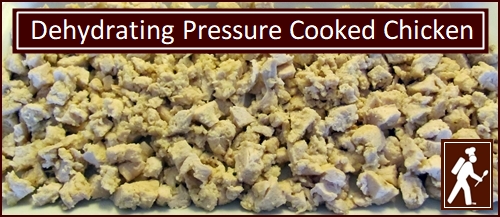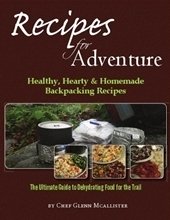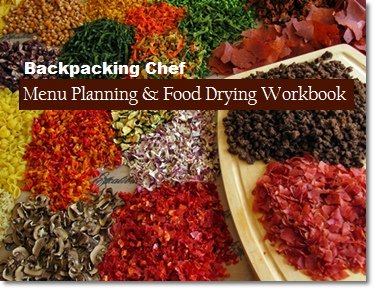Pressure Cooking Chicken & How to Dehydrate It
Dehydrating pressure cooked chicken allows you to infuse the chicken with delicious aromatic flavors while retaining all the flavor of the chicken itself. After a few minutes in the pressure cooker, the chicken will be fully cooked, tender and delicious. As a bonus, you will end up with rich tasting chicken stock for gravy or to be used in the dehydration process. Dehydrated pressure cooked chicken rehydrates much better than chicken that is grilled, fried or baked.
Pressure cooked chicken before drying.
This page shows how to pressure cook chicken for use in meals or cold
salads. I then show how to dehydrate the chicken for use in backpacking
meals. The flavor and aroma of this pressure cooker chicken recipe is
wonderful and the tender cooked chicken pulls apart without a knife.
Embrace Flavorful Chewy Chicken
After
you dehydrate chicken, it does not completely rehydrate back to the
tender condition it was in before you dried it. Pressure cooked and
dried chicken will be chewy, comparable to dried canned chicken, but
much easier to chew than dried chicken that was cooked any other way.
When combined in a meal with rice and vegetables, the different textures
make the meal interesting.
Chicken Jerky Bonus: For a quick high-protein snack on the trail, this recipe makes a delicious and crunchy chicken jerky.
How to Pressure Cook One Pound of Chicken Breast Meat
This pressure cooker chicken recipe is for approximately one pound +/- an ounce or two of chicken breast meat (approx. 500 grams).
Breast meat is low in fat which makes it better for storage than the fattier thighs and legs.
Let’s get started…
The Secret Ingredient
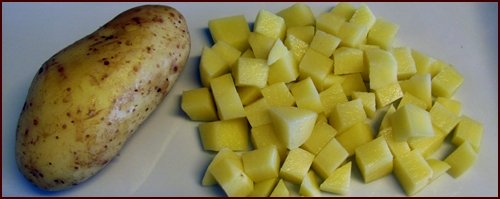
A Small Potato – The Secret Ingredient
When high-protein foods like meat or scrambled eggs are dehydrated, they lock up and don’t want to take back much water when you rehydrate them in a meal. Incorporating starch into the protein helps it rehydrate much better. That’s why I add breadcrumbs to ground chicken and ground beef, before cooking and dehydrating.
Pressure Cook the Potato:
- Peel and cube a small potato, approximately 4 ounces (113 grams)
- Combine in pressure cooker with 1¼ cups fat-free chicken broth or water with bouillon. (300 ml)
- Add ½ tsp salt.
- Heat until the salt (and bouillon, if added) dissolves. Put lid on pressure cooker.
- Pressure cook on high for three minutes and set aside, allowing the pressure to release on its own rather than using a fast release method.
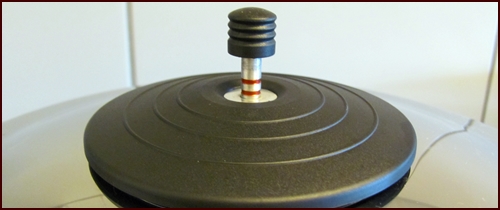
This Kuhn Rikon pressure cooker has two pressure settings, low and high, indicated by the red lines on the gauge at the top of the pot. The first red line pops up at low pressure and the second when high pressure is reached. Use high pressure for both the potato and the chicken.
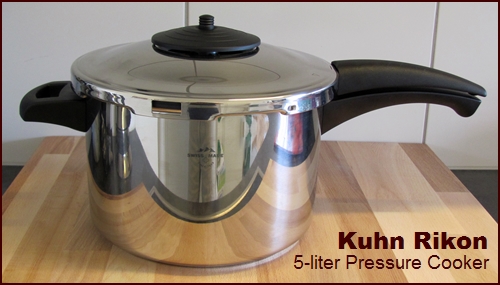
Cut & Tenderize the Chicken
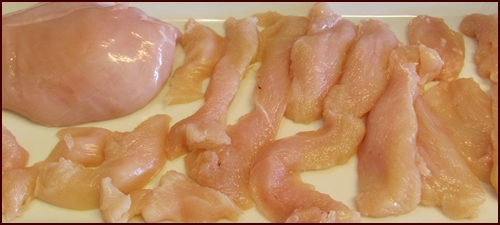
Chicken breast meat cut crosswise into strips.
Cut the chicken into strips to open up more surface area for tenderizing and infusion of starch and flavors.
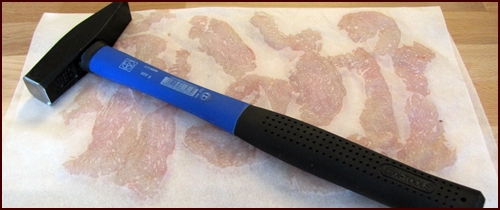
Tenderizing breaks down some of the cell walls in the protein which improves its ability to reabsorb water in a dehydrated meal.
Place chicken pieces between parchment paper and bang on them with a tenderizing mallet, or hammer, as shown. Go ahead… get out some of those aggressions. It will look like your hammer is going right through the meat, but it will still hold together while being thinner when you are done.
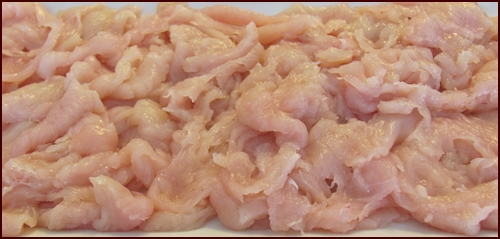
"Hammered" Chicken
Mash the Potato
By now, the pressure cooker with the potato will have cooled. Remove the lid and mash the potato with a potato masher including all the liquid in the pot.
Add the hammered chicken to the pot.
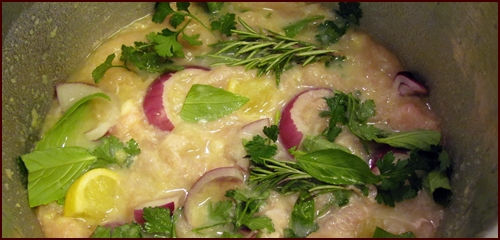
Aromatic ingredients in the pot with the chicken and potato-thickened liquid.
Pressure Cooker Chicken Recipe
Ingredients:
- 1 pound Chicken Breast Meat (approx. 500 grams)
- 1 Small Potato (approx. 4 oz., or 113 grams)
- 1¼ cups Fat-free Chicken Broth or Water with Bouillon (300 ml)
- ½ tsp Salt
- 1 Onion Slice, separated into rings
- 1 Clove Garlic, cut into pieces
- 1 Lemon Slice, cut into four pieces and squeezed
- Fresh Herbs: I use two sprigs each of Rosemary, Basil and Parsley. Dried herbs can be used if fresh are not available.
- Ground Pepper as desired
After preparing the potato broth and chicken as previously described, add the rest of the ingredients to the pressure cooker and stir, pushing the herbs down into the liquid and distributing the lemon juice.
Pressure cook for ten minutes once high pressure is reached.
Set pot aside and allow pressure to release on its own rather than using a quick pressure release. It took ten minutes for the pressure to release from my Kuhn Rikon pressure cooker. Had I wanted a quick release, I would have simply pushed down on the gauge with a long spoon.
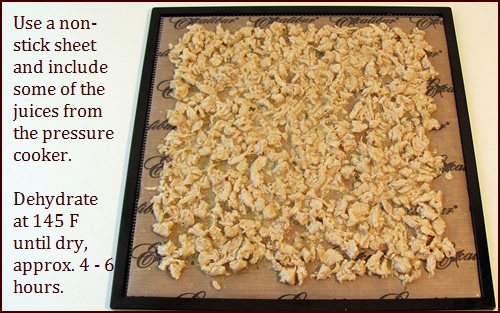
Pressure cooked chicken shown on Excalibur dehydrator tray covered with Paraflexx sheet.
Dehydrating Pressure Cooked Chicken
Remove meat from pressure cooker with tongs and pull apart into smaller pieces with fingers. Remove any ingredients that may have merged with the meat, but it doesn’t harm to leave a few bits of the herbs.
Spread meat out on dehydrator tray covered with non-stick sheet or fruit leather insert.
Spoon some of the flavorful liquid from the pressure cooker over the meat on the tray.
Dehydrate at 145°F (63°C) until completely dry, approximately 5 to 6 hours.
Store in an air-tight container for short-term storage of a few weeks, vacuum seal for storage up to six months, or freeze for long-term storage greater than six months.
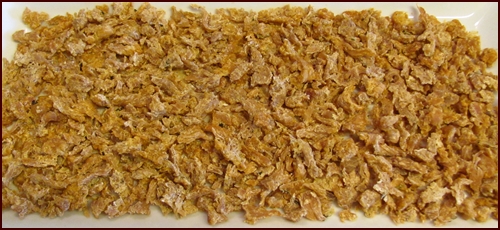
Dried pressure cooked chicken. Use in meals or eat it dry as crunchy chicken jerky.
This pressure cooking chicken technique is included in Recipes for Adventure II: The Best of Trail Bytes.
Books to Help You Dehydrate Better Backpacking Meals
|
Recipes for Adventure II: The Best of Trail Bytes (New) Recipes for Adventure: Healthy, Hearty & Homemade Backpacking Recipes The Menu Planning & Food Drying Workbook |
Pressure Cooking a Whole Chicken
Apricot Chicken Recipe shared by Neil Bellamy
Hi Chef Glenn, great site! I am from Australia and a hiker - although we call it bushwalking here. I have stumbled across an easy method of pressure cooking chicken for dehydration that comes out moist when rehydrated in trail meals.
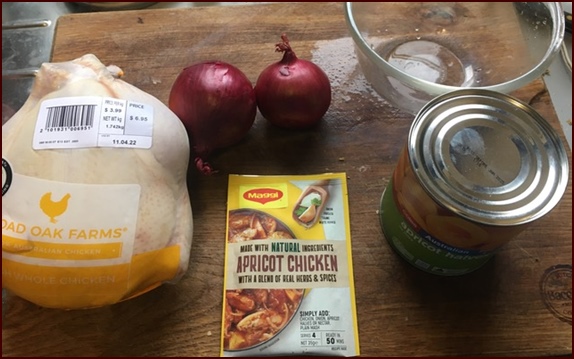
Skin a whole chicken and break into pieces: thighs, breasts, wings, and drum sticks. No need to pound them with a hammer.
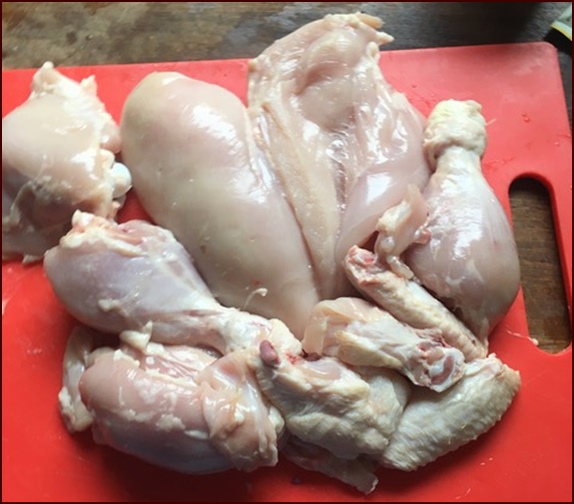
Put the pieces into a pressure cooker with a dry seasoning mix of choice (mushroom stroganoff base; apricot chicken base; or chicken chasseur).
Include other items suggested on the seasoning mix packet such as onions, apricots, mushrooms, etc.
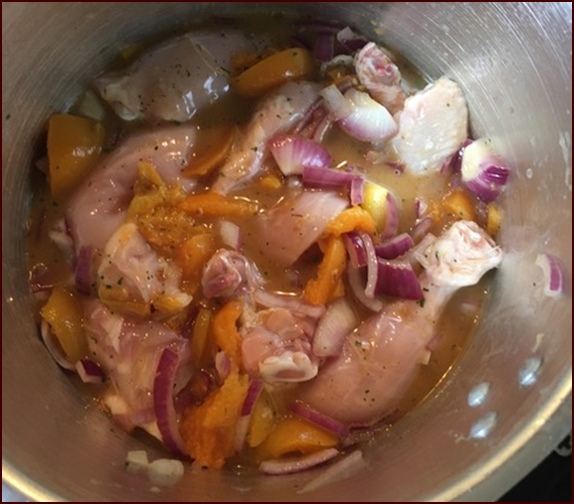
Heat the pot up to pressure and pressure cook for ten minutes. Then let it rest fifteen minutes with the lid on.
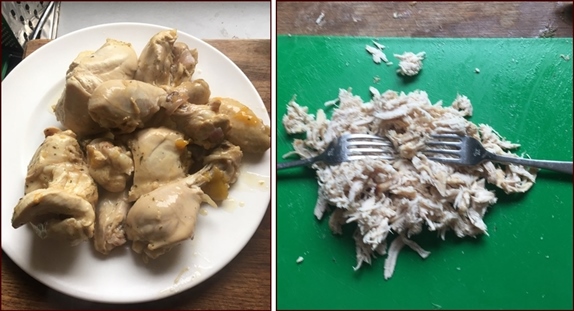
Take the chicken pieces out and shred them with two forks, but put the wings to the side because they have too much fat and skin on them. The more shredded the better.
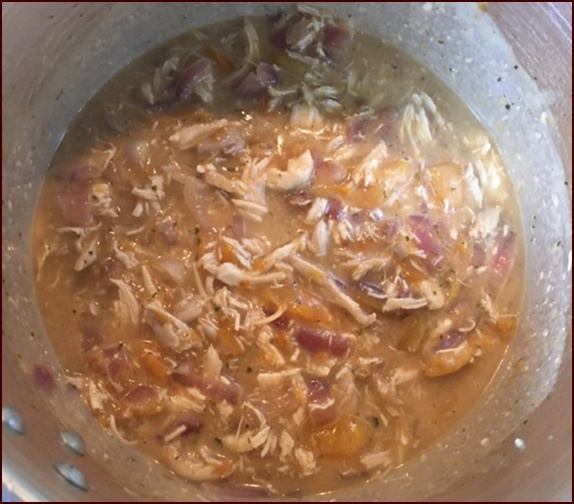
Put the shredded chicken back in the pot. Heat up again and thicken with cornflower dissolved in water.
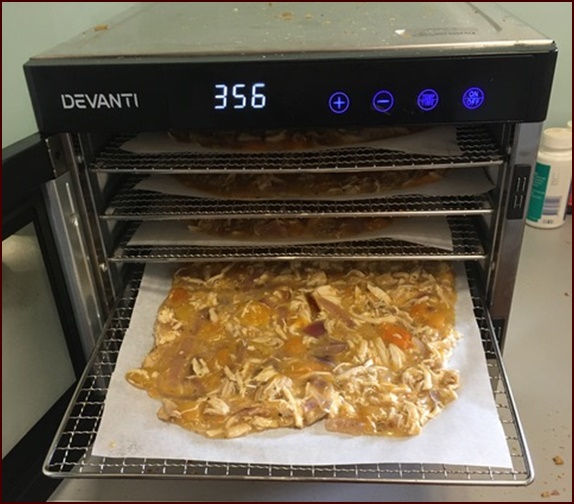
Spread pressure-cooked chicken mixture on nonstick sheets or baking paper/parchment paper. Begin dehydrating at 63°C (145°F) for four hours. Then break up and spread out on the trays further. Dehydrate for approximately four more hours until dry.
Rehydrating Dehydrated Pressure Cooked Chicken
Pour boiled water in a thermos food jar first, and let it absorb that heat. Then tip out. This preheats the thermos which helps ramp up the heat. Put in your meal, then add boiled water again to cover ingredients. After twenty minutes, it comes out hot like it was not even dehydrated.
Alternatively, place meal in a pot with water to cover. Let soak for five minutes, then bring to a boil for a minute or two. Transfer pot to insulating cozy for twenty minutes.
I have also just pressure cooked chicken pieces in chicken stock and herbs, and then shredded the chicken and dehydrated just the chicken. Shown below.
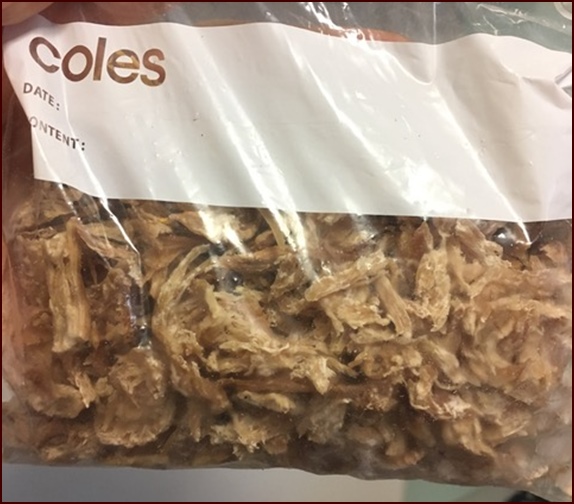
Photo below shows a rehydrated pasta backpacking meal which has dehydrated shredded chicken in it. It helps to eat the chicken with sauce. Mixing gravy or a powdered curry sauce with rehydrated chicken works well.
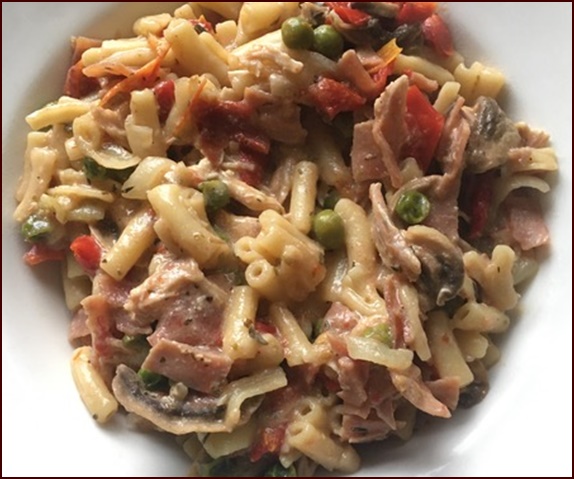
Explore More...
Try this backpacking recipe: Curry Chicken & Rice
Don't have a pressure cooker? Try Dehydrating Canned Chicken.
Try this fail-proof method of Dehydrating Ground Beef & Chicken.
Share this page with friends on social media.
Free E-book & Newsletter
Free with Trail Bytes subscription.
Dehydrating Food from A–Z

